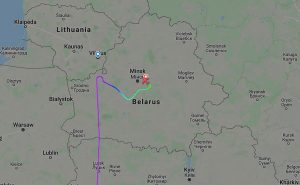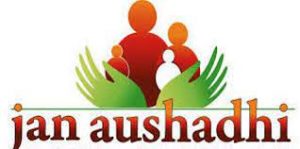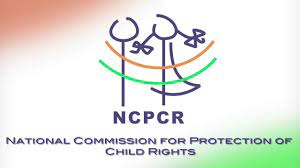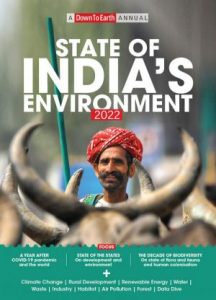Today Current Affairs: 7th March 2022 for UPSC IAS exams, State PSC exams, SSC CGL, State SSC, RRB, Railways, Banking Exam & IBPS, etc
Table of Contents
Monetary Policy Committee: RBI

The Monetary Policy Committee (MPC) of the Reserve Bank of India’s (RBI) noted that the central bank’s accommodative policy stance may fail to comply with the Inflation target (upper limit of 6%).
- An accommodative stance indicates a willingness on the part of the central bank to expand money supply and cut interest rates.
- The MPC fixes the benchmark interest rate — or the base or reference rate that is used to set other interest rates — in India.
Monetary policy:
- Monetary policy refers to the policy of the central bank with regard to the use of monetary instruments under its control to achieve the goals specified in the Act.
- The primary objective of the RBI’s monetary policy is to maintain price stability while keeping in mind the objective of growth.
- Price stability is a necessary precondition to sustainable growth.
- The amended RBI Act, 1934 also provides for the inflation target (4% +-2%) to be set by the Government of India, in consultation with the Reserve Bank, once in every five years.
Monetary Policy Committee (MPC)?:
- Under Section 45ZB of the amended (in 2016) RBI Act, 1934, the central government is empowered to constitute a six-member Monetary Policy Committee (MPC).
- Further, Section 45ZB lays down that “the Monetary Policy Committee shall determine the Policy Rate required to achieve the inflation target”.
- The decision of the Monetary Policy Committee shall be binding on the Bank.
- Composition: Section 45ZB says the MPC shall consist of 6 members:
- RBI Governor as its ex officio chairperson,
- Deputy Governor in charge of monetary policy,
- An officer of the Bank to be nominated by the Central Board,
- Three persons to be appointed by the central government.
- This category of appointments must be from “persons of ability, integrity and standing, having knowledge and experience in the field of economics or banking or finance or monetary policy”.
SARAS 3 Radio Telescope:

Indian researchers have conclusively refuted a recent claim of the discovery of a radio wave signal from cosmic dawn, the time in the infancy of our Universe when the first stars and galaxies came into existence.
- In 2018 a team of researchers from Arizona State University (ASU) and MIT in the US detected a signal from stars emerging in the early universe using data from the EDGES radio telescope.
- The study published in the journal Nature created much excitement in the astronomy community around the world.
- ASU/MIT team had claimed the discovery of a radio wave signalling the birth of the First Stars, which was also hailed by Harvard astrophysicist Avi Loeb as worthy of two Nobel prizes.
- However, the world awaited confirmation from independent researchers.
- Utilising the indigenously invented and built SARAS 3 radio telescope, researchers from Raman Research Institute refuted this claim.
- The SARAS 3 radio telescope is invented and built by the astronomers at RRI.
- The RRI findings are now published in Nature Astronomy.
- Raman Research Institute (RRI) is an institute of scientific research located in Bangalore, India.
- It was founded by Nobel laureate C. V. Raman.
- It is an autonomous institute of the Department of Science & Technology, Govt. of India.
India abstained On A Vote At The UN Human Rights Council:

India abstained on a vote at the UN Human Rights Council in Geneva as the Council decided to set up an international commission of enquiry into Russia’s actions in Ukraine.
- The resolution “strongly condemned” aggression by Russia in Ukraine. Russian troops recently captured Zaporizhzhia Nuclear power plant in Ukraine.
- India was among 13 countries of the 47-member council that abstained from the resolution.
- Thirty-two countries voted for the resolution that asked the HRC president to appoint three human rights experts for a year. Only Russia and Eritrea voted against the resolution.
- The Human Rights Council is an inter-governmental body within the United Nations system.
- It meets at the UN Office at Geneva.
- It was founded in 2006. It replaced the former United Nations Commission on Human Rights (UNCHR) that had been strongly criticised for allowing countries with poor human rights records to be members.
- The Council is made of 47 Member States, which are elected by the UN General Assembly. The Council’s Membership is based on equitable geographical distribution.
Brahmos Supersonic Cruise Missile:

The Indian Navy successfully demonstrated the accuracy of an extended-range land attack Brahmos supersonic cruise missile from the stealth destroyer INS Chennai, on 5th March, 2022.
- The missile hit its intended target with pinpoint accuracy after traversing an extended range trajectory and performing complex manoeuvres.
- Both Brahmos missile and INS Chennai are indigenously built and highlight the cutting-edge of Indian missile and ship-building prowess.
- This achievement establishes the Indian Navy’s ability to strike even deeper and influence land operations further away from sea, when and where required.
- BrahMos Aerospace, an India-Russian joint venture, produces the supersonic cruise missiles that can be launched from submarines, ships, aircraft, or land platforms.
- BrahMos missile flies at a speed of 2.8 Mach or almost three times the speed of sound.
- The range of the advanced version of the missile is learnt to have been extended to around 350 km from the original 290 km.
Predatory Pricing:

The Competition Commission of India (CCI) has dismissed allegations of predatory pricing against e-commerce platform Shopee arguing that Shopee did not hold significant market power as it is a relatively new entrant in a market with well-established players.
- Predatory pricing is the illegal act of setting prices low to attempt to eliminate the competition.
- For a business to be engaging in predatory pricing requires that the enterprise be a dominant player in the relevant market, besides establishing that its goods or services are being marketed below cost and that sub-tactics are being used with the intention to eliminate competition.
- Predatory pricing violates antitrust laws, as it makes markets more vulnerable to a monopoly.
- However, allegations of this practice can be difficult to prosecute because defendants may argue successfully that lowering prices is part of normal competition, rather than a deliberate attempt to undermine the marketplace.
- Under the Indian jurisprudence, Predatory pricing is described as ‘unfair or discriminatory’ pricing, and is forbidden by law under Section 4 of the Competition Act, 2002, which refers to the “Abuse of a Dominant Position”.
Belarus:

Belarus, the largest landlocked European country bordering the two warring nations has found itself in a precarious position amid its political proximity with Russia.
- The country is now at the receiving end of the West’s economic sanctions, meant to deter the Russian assault on Ukraine. The Belarusian border serves as the site for dialogue between Russia and Ukraine to possibly end the war.
- Historically, Belarus has acted as the site of negotiations between the two nations – two sets of agreements were signed in the Belarusian capital of Minsk in 2014 and 2015 to end the conflict in eastern Ukraine.
- Belarus is a landlocked country in Eastern Europe. It is bordered by Russia to the northeast, Ukraine to the south, Poland to the west, and Lithuania and Latvia to the northwest.
- Its capital is Minsk.
- After the disintegration of the Soviet Union in 1991, Belarus became a sovereign nation, and its first presidential elections were held in 1994.
- Alexander Lukashenko has served as the country’s first president since 1994.
- Belarus has been labelled “Europe’s last dictatorship” by some Western journalists, on account of the country’s poor human rights record and Lukashenko’s self-described authoritarian style of government.
Zaporizhzhia Nuclear Power Station:

Zaporizhzhia Nuclear Power Station, Europe’s largest nuclear power plant was hit by Russian shelling, sparking a fire and raising fears of a disaster that could affect all of central Europe for decades, like the 1986 Chernobyl meltdown.
- Concerns faded after Ukrainian authorities announced that the fire had been extinguished, and while there was damage to the reactor compartment, the safety of the unit was not affected.
- But even though the Zaporizhzhia nuclear plant is of a different design than Chernobyl and is protected from fire, nuclear safety experts and the International Atomic Energy Agency warn that waging war in and around such facilities presents extreme risks.
- Zaporizhzhia nuclear plant is located in Enerhodar, Ukraine, on the southern shore of the Kakhovka Reservoir on the Dnieper river.
- It is the largest nuclear power plant in Europe and among the 10 largest in the world.
- The plant has 6 VVER-1000 pressurized light water nuclear reactors (PWR).
Data Protection Bill:

The government has said that it is studying the inputs received on the draft data protection bill, and will carefully ensure that any legislation in the digital ecosystem will act as an enabler, fuelling the growth momentum.
- On December 16, 2021, the Joint Committee on Personal Data Protection Bill had tabled its report in both the Houses of Parliament, giving its views on various provisions.
- Nearly two years after it was constituted on 11 December 2019, the Joint Committee on the Personal Data Protection Bill, 2019, headed by BJP MP P.P. Chaudhary, presented its final report on the upcoming bill in both Houses of Parliament on 16 December.
Key recommendations:
- Remove the word ‘personal’ from the existing title of ‘Personal Data Protection Bill’. This is intended to reflect that the bill, in order to better ensure privacy, will also be dealing with non-personal data, such as personal data that has been anonymised.
- Amend the section restricting the transfer of personal data outside India to say “sensitive personal data shall not be shared with any foreign government or agency unless such sharing is approved by the central government.
- No social media platform be allowed to operate in India unless its parent company, which controls the technology powering its services, sets up an office in the country.
- It proposes a separate regulatory body to be set up to regulate the media.
- Jail term of up to 3 years, fine of Rs 2 lakh or both if de-identified data is re-identified by any person.
- The word ‘personal’ ought to be dropped from the name of the Bill.
- Central government may exempt any government agency from the legislation only under exceptional circumstances.
Janaushadhi Diwas week : 1st March To 7th March 2022

Janaushadhi Diwas week to be observed from 1st March to 7th March 2022.
- Theme of 4th Janaushadhi Diwas: “Jan Aushadhi-Jan Upyogi”
- Pharmaceuticals & Medical Devices Bureau of India (PMBI) is the implementing agency of Pradhan Mantri Bhartiya Janaushadhi Pariyojana (PMBJP).
- All the districts of the country have been covered under the scheme.
- Effective IT-enabled logistics and supply-chain systems for ensuring real-time distribution of medicines at all outlets have also been introduced.
- Product basket of PMBJP presently comprises 1,451 drugs and 240 surgical instruments.
PMBJP:
- It is a campaign launched by the Department of Pharmaceuticals of the Ministry of Chemicals and Fertilizers.
- It seeks to provide quality medicines at affordable prices to the masses through special kendra’s known as Pradhan Mantri Bhartiya Jan Aushadhi Kendra.
- Initially launched in 2008, the scheme was rechristened in 2015.
National Commission For Protection Of Child Rights (NCPCR):

National Commission for Protection of Child Rights (NCPCR) celebrated its 17th Foundation Day, recently.
- NCPCR was set up in March 2007 under the Commissions for Protection of Child Rights (CPCR) Act, 2005, an Act of Parliament (December 2005).
- The Commission began operational on 5 March 2007.
- NCPCR is a statutory body under the administrative control of the Ministry of Women & Child Development, Government of India.
- The Commission’s Mandate is to ensure that all Laws, Policies, Programmes, and Administrative Mechanisms are in consonance with the Child Rights perspective as enshrined in the Constitution of India and also the UN Convention on the Rights of the Child.
- Under the RTE Act, 2009, the NCPCR can:
- Inquire into complaints about violation of the law.
- Summon an individual and demand evidence.
- Seek a magisterial enquiry.
- File a writ petition in the High Court or Supreme Court.
- Approach the government concerned for prosecution of the offender.
- Recommend interim relief to those affected.
- Composition of NCPCR:
- This commission has a chairperson and six members.
- Of which at least two should be women.
- These are appointed by Central Government for three years.
- The maximum age to serve in commission is 65 years for Chairman and 60 years for members
Demand For Inclusion Of Bhojpuri In The Eighth Schedule Of The Constitution:

Bihar Chief Minister Nitish Kumar has said his government would revive its long-pending demand for inclusion of Bhojpuri in the Eighth Schedule of the Constitution, so that it can be accorded the status of an official language.
- The state cabinet had sent a proposal to the Centre in this regard in 2017.
Eighth schedule to the Constitution:
- Part XVII of the Indian constitution deals with the official languages in Articles 343 to 351.
- The Constitutional provisions related to the Eighth Schedule are:
- Article 344: Article 344(1) provides for the constitution of a Commission by the President on expiration of five years from the commencement of the Constitution.
- Article 351: It provides for the spread of the Hindi language to develop it so that it may serve as a medium of expression for all the elements of the composite culture of India.
- Assamese, Bengali, Gujarati, Hindi, Kannada, Kashmiri, Konkani, Malayalam, Manipuri, Marathi, Nepali, Oriya, Punjabi, Sanskrit, Sindhi, Tamil, Telugu, Urdu, Bodo, Santhali, Maithili and Dogri are the 22 languages presently in the eighth schedule to the Constitution.
Kavach: Automatic Train Protection System

The Indian Railways tested ‘Kavach’-Automatic Train Protection System by making two trains move towards each other at full speed.
- The Kavach system was announced in the 2022 Union Budget as a part of the Atmanirbhar Bharat initiative.
- Around 2,000 km of rail network is planned to be brought under the indigenous system to enable safety and capacity augmentation in 2022-23.
Kavach:
- It is India’s own automatic protection system, which is in development since 2012, under the name Train Collision Avoidance System (TCAS), which got rechristened Kavach or “armour”.
- It is a set of electronic devices and Radio Frequency Identification (RFID) devices installed in locomotives, in the signalling system as well as the tracks.
- They connect to each other using ultra high radio frequencies to control the brakes of trains and also alert drivers, all based on the logic programmed into them.
- TCAS or Kavach includes the key elements from already existing, and tried and tested systems like the European Train Protection and Warning System, and the indigenous Anti Collision Device.
- It will also carry features of the high-tech European Train Control System Level-2 in future.
- The current form of Kavach adheres to the highest level of safety and reliability standard called Safety Integrity Level (SIL)4.
- SIL comes from two voluntary standards used by plant owners/operators to quantify safety performance requirements for hazardous operations.
- There are four SIL Levels (1-4). A higher SIL Level means a greater process hazard and a higher level of protection required.
- In the new avatar, India wants to position Kavach as an exportable system, a cheaper alternative to the European systems in vogue across the world.
- While now Kavach uses Ultra High Frequency, work is on to make it compatible with 4G Long Term Evolution (LTE) technology and make the product for global markets.
- Work is on to make the system such that it can be compatible with other already installed systems globally.
World Wildlife Day:

World Wildlife Day has been celebrated every year on the 3rd of March since 2013.
- The date chosen coincides with the day of the Convention on International Trade in Endangered Species of Wild Fauna and Flora (CITES) which was signed in 1973.
- The UNGA (General Assembly) resolution also designated the CITES Secretariat as the facilitator for the global observance of this special day for wildlife on the UN (United Nations) calendar.
- Theme: Recovering key species for ecosystem restoration.
- This theme is chosen as a way to draw attention to the conservation status of some of the most critically endangered species of wild fauna and flora.
- This aligns with UN Sustainable Development Goals 1, 12, 14 and 15, and their wide-ranging commitments on alleviating poverty, ensuring sustainable use of resources, and on conserving life both on land and below water to halt biodiversity loss.
- Our planet is currently facing the urgent challenge that is the loss of biodiversity and up to a million species could disappear in the coming decades if unsustainable human activity, climate change and habitat degradation are left unchecked.
State Of India’s Environment Report 2022: CSE

The Centre for Science and Environment (CSE), released the State of India’s Environment Report 2022.
- The report is the annual publication of the Centre for Science and Environment, and Down To Earth (magazine).
- The report focuses on climate change, migration, health and food systems. It also covers biodiversity, forest and wildlife, energy, industry, habitat, pollution, waste, agriculture and rural development.
- CSE is a public interest research and advocacy organisation based in New Delhi.
- The target for the economy is to raise the Gross Domestic Product (GDP) to nearly USD 4 trillion by 2022-23. But by 2020, the economy has grown only to USD 2.48 trillion.
- The economy has largely shrunk during the Covid-19 pandemic, making it even more difficult to meet the deadline.
- The target is to increase the female labour force participation rate to at least 30% by 2022-23.
- It stood at 17.3% in January-March 2020.
- The targets are to construct 29.5 million housing units under Pradhan Mantri Awas Yojana (PMAY)-Rural and 12 million units under PMAY-Urban.
- Only about 46.8% and 38% respectively of the targets under ‘Housing for All’ have been achieved.
- The target is to provide safe piped drinking water to all by 2022-23.
- Only 45% of the target has been achieved.
- The target is to double farmers’ income by 2022.
- While the average monthly income of an agricultural household has increased to Rs 10,218 from Rs 6,426, this increase is largely due to increase in wages and income from farming animals.
- The share of income from crop production in the average monthly income of an agricultural household has, in fact, dropped — to 37.2% in 2018-19, from 48% in 2012-13.
- Another target is to digitise all land records by 2022. While states like Madhya Pradesh, West Bengal and Odisha have made good progress, states like Jammu and Kashmir, Ladakh and Sikkim languish at 5%, 2% and 8.8% digitisation of land records, respectively.
- Overall, the target is unlikely to be met, particularly because 14 states have witnessed deterioration in the quality of land records since 2019-20.
- The target is to bring down Particulate Matter (PM) 2.5 levels in Indian cities to less than 50 micrograms per cubic metre (µg/m3). In 2020, when vehicular movement was restricted due to the pandemic, 23 of the 121 cities monitored for PM2.5 exceeded 50 µg/m3.
- The target is to achieve 100% source segregation in all households.
- The overall progress is 78%; and while states like Kerala and Union territories like Puducherry have achieved the target, others like West Bengal and Delhi are woefully behind.
- Manual scavenging is targeted for eradication, but India still has 66,692 manual scavengers.
- The target is to increase it to 33.3% of the geographical area, as envisaged in the National Forest Policy, 1988.
- By 2019, 21.6% of India was under forest cover.
- The target is to achieve 175 GW of renewable energy generation capacity by 2022.
- Only 56% of this target has been achieved thus far.
Iran’s (Tehran’s) 2015 Nuclear Accord:

The diplomats from Iran and world powers reconvened in Vienna (Austria) to seek a deal reviving Iran’s (Tehran’s) 2015 Nuclear Accord.
- The 2015 Iran nuclear deal, signed under President Barack Obama, and dismantled in 2018 by President Donald Trump.
- The US said it will rejoin the agreement if Iran complies with the terms of the original deal, and if it addresses other issues related to alleged ballistic missile stockpiles and the proxy conflicts that it backs across the region.
The 2015 Iran nuclear deal:
- The deal, formally known as Joint Comprehensive Plan of Action (JCPOA).
- The JCPOA was the result of prolonged negotiations from 2013 and 2015 between Iran and P5+1 (China, France, Russia, the United Kingdom, the United States + Germany).
- Under the deal, Iran agreed to significantly cut its stores of centrifuges, enriched uranium and heavy-water, all key components for nuclear weapons.
- Iran also agreed to implement a protocol that would allow inspectors from the International Atomic Energy Agency (IAEA) to access its nuclear sites to ensure Iran would not be able to develop nuclear weapons in secret.
- While the West agreed to lift sanctions related to Iran’s nuclear proliferation, other sanctions addressing alleged abuses of human rights and Iran’s ballistic missile programme remained in place.
- The US committed to lifting sanctions on oil exports, but continued to restrict financial transactions, which have deterred international trade with Iran.
- Nonetheless, Iran’s economy, after suffering years of recessions, currency depreciation, and inflation, stabilized significantly after the deal took effect, and its exports skyrocketed.
- Israel, America’s closest ally in the Middle East, strongly rejected the deal, and other countries like Iran’s great regional rival Saudi Arabia, complained that they were not involved in the negotiations even though Iran’s nuclear programme posed security risks for every country in the region.
- After Trump abandoned the deal and reinstated banking and oil sanctions, Iran ramped up its nuclear programme in earnest, returning to approximately 97% of its pre-2015 nuclear capabilities.
Defence Acquisition Procedure:

The Ministry of Defence approved projects that will involve design and development of the military hardware covering light tanks, airborne stand-off jammers, communication equipment and simulators under Defence Acquisition Procedure (DAP).
- The defense ministry has cleared nine such projects: four under the ‘Make-I’ and five under the ‘Make-2’ categories of the DAP 2020.
- In the Union Budget 2022, India earmarked Rs 84,598 crore – 68% of the military’s capital acquisition budget — for purchasing locally produced weapons and systems to boost self-reliance in the defence sector, besides setting aside 25% of the defence R&D budget for private industry, startups and academia to encourage them to pursue design and development of military platforms.
Make Category:
- The ‘Make’ category of capital acquisition is the cornerstone of the Make in India initiative that seeks to build indigenous capabilities through the involvement of both public and private sector.
- ‘Make-I’ refers to government-funded projects while ‘Make-II’ covers industry-funded programmes.
- Make-I involved in development of big-ticket platforms such as light tank and communication equipment with Indian security protocols.
- Make-II category involves prototype development of military hardware or its upgrade for import substitution for which no government funding is provided.
- The five projects approved under the industry-funded Make-II procedure are simulators for Apache attacks helicopters and Chinook multi-mission choppers, wearable robotic equipment for aircraft maintenance, autonomous combat vehicle and integrated surveillance and targeting system for mechanised forces.
- Another sub-category under ‘Make’ is ‘Make-III’ that covers military hardware that may not be designed and developed indigenously, but can be manufactured in the country for import substitution, and Indian firms may manufacture these in collaboration with foreign partners.
FDI Up To 20% Under The “Automatic Route” In LIC:

The Union Cabinet cleared an amendment to the FDI Policy to allow Foreign Direct Investment (FDI) up to 20% under the “automatic route” in Life Insurance Corporation (LIC) ahead of its proposed Initial Public Offer (IPO).
- The government expects to mobilize Rs 63,000-66,000 crore from the proposed share sale to meet its disinvestment target of Rs 78,000 crore for FY 2021-22.
- LIC is fully owned by the government. It was set up in 1956. It has the biggest share in India’s insurance business.
- In most contexts, disinvestment typically refers to sale from the government, partly or fully, of a government-owned enterprise.
- A company or a government organisation will typically disinvest an asset either as a strategic move for the company, or for raising resources to meet general/specific needs.
- At present, the FDI policy does not prescribe any specific provision for foreign investment in LIC which is a statutory corporation established under LIC Act, 1956.
- The policy permits FDI in insurance companies and intermediaries or insurance intermediaries in the insurance sector.
- The FDI ceiling for public sector banks is 20% on the government approval route.
- While the government had last year raised the FDI limit in the insurance sector to 74% from 49%, it did not cover LIC that is governed by a specific legislation.
- Since LIC does not fall in any of these categories and no limit is prescribed for foreign investment in LIC under the LIC Act, the government has decided to allow foreign investment up to 20% for LIC and other corporate bodies.
- In order to expedite the capital raising process, such FDI has been kept on the automatic route, as is in the case of the rest of the insurance sector.
FDI:
- FDI is the process whereby residents of one country (the home country) acquire ownership of assets for the purpose of controlling the production, distribution and other activities of a firm in another country (the host country).
- It is different from Foreign Portfolio Investment where the foreign entity merely buys stocks and bonds of a company. FPI does not provide the investor with control over the business.
- Flows of FDI comprise capital provided (either directly or through other related enterprises) by a foreign direct investor to an enterprise.
Routes through which India gets FDI:
- Automatic Route: In this, the foreign entity does not require the prior approval of the government or the RBI.
- Government route: In this, the foreign entity has to take the approval of the government.
- The Foreign Investment Facilitation Portal (FIFP) facilitates the single window clearance of applications which are through approval route.




